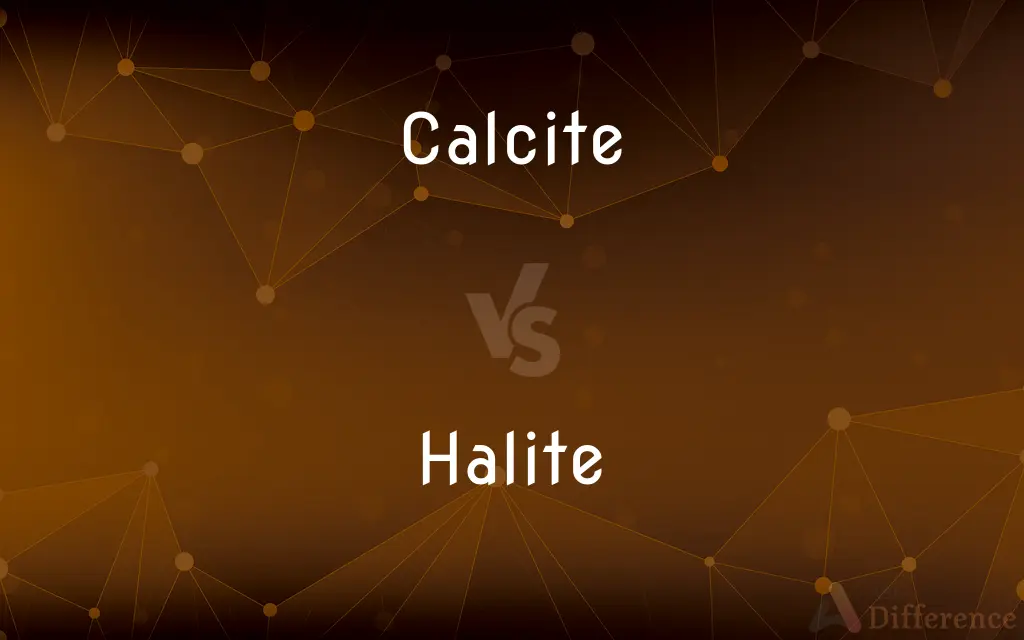Calcite vs. Halite — What's the Difference?

Difference Between Calcite and Halite
ADVERTISEMENT
Compare with Definitions
Calcite
Calcite is a carbonate mineral and the most stable polymorph of calcium carbonate (CaCO3). The Mohs scale of mineral hardness, based on scratch hardness comparison, defines value 3 as "calcite".
Halite
Halite (), commonly known as rock salt, is a type of salt, the mineral (natural) form of sodium chloride (NaCl). Halite forms isometric crystals.
Calcite
A common crystalline form of natural calcium carbonate, CaCO3, that is the basic constituent of limestone, marble, and chalk. Also called calcspar.
Halite
A colorless or white mineral, NaCl, occurring as cubic crystals and found in dried lakebeds in arid climates, mined or gathered for use as table salt.
Calcite
(mineral) a very widely distributed crystalline form of calcium carbonate, CaCO3, found as limestone, chalk and marble
ADVERTISEMENT
Halite
Rock salt.
Calcite
Calcium carbonate, or carbonate of lime. It is rhombohedral in its crystallization, and thus distinguished from aragonite. It includes common limestone, chalk, and marble. Called also calc-spar and calcareous spar.
Halite
(mineral) Native salt; sodium chloride NaCl as a mineral; rock salt.
Calcite
A common mineral consisting of crystallized calcium carbonate; a major constituent of limestone
Halite
(chemistry) An oxyanion containing a halogen in the +3 oxidation state.
Halite
Native salt; sodium chloride.
Halite
Naturally occurring crystalline sodium chloride
Share Your Discovery

Previous Comparison
Appease vs. Placate
Next Comparison
Phase vs. Span













































